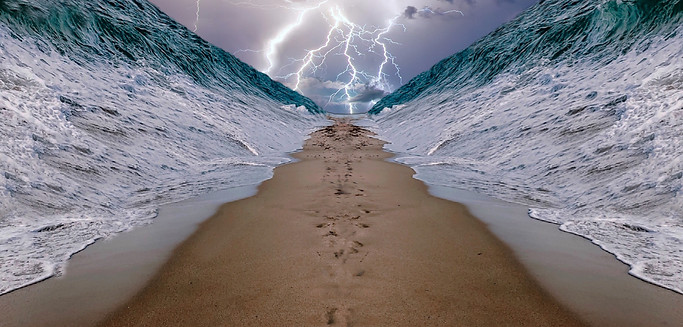The Pesach Seder

The Pesach seder must be one of the most brilliant educational inventions of all times. Not only in terms of its vintage (an odd 2000 years!) but also in its terms of its pedagogical genius. That is, yes, it is wonderful that it’s been around for so long, but it actually works! What I would like to discuss, is what the seder is meant to teach us, why the lesson is crucial and how it succeeds in doing so.
The lesson of the seder is quite simple: the Jewish people as a whole were enslaved in Egypt, under the rule of an evil autocrat, Pharaoh, and they were rescued through a series of completely supernatural events, ordained by the Omnipotent Master of the Universe, as directed by His servant Moshe.
You ask, “Great, but why is that lesson so vital for me, living in the 3rd millennium, in the times of iPhones and apps, of mood control medications and remote control fabrications?” I answer, “because knowing these facts is the most life changing, inspiring and pertinent thing you could ever do with your life”. “Whaaat??” you ask “Patience” I answer.
The miracles which occurred in ancient Egypt were a-once-in-history removal of the disguise that Hashem wears in this world, where His presence is hidden. He came out of hiding and showed how He controlled every little aspect of the world: water and blood, lice and locusts, sickness and health and ultimately life itself. At the time, there was no room for confusion, you saw the 13 principles of faith happening all around you!
The Creator only put on that show once, thereafter He left it up to us to remember it. And remember it at all costs. By creating a national memory of the events we would be able to be able to make a simple deduction, “If Hashem can stop life in a second, (in the plague of the first born, where they all died exactly at midnight) then every breath we take is only because He is choosing not to stop us from taking it!”. Stop! Think about that point. Breathe in, breathe out. It’s not a guarantee. Every breath is a gift. Breathe in, breathe out. Say “thank you”. If you’re not connecting to this and breathing is a given and not a gift, it’s because your memory of the miracles of Egypt have faded. The fresher and more vivid your recollection of those dramatic events, the more every breath will be a gift. The more you see what Hashem did in the past, the more you will see Him in the present.
I made a deliberate grammatical error above, I said that in Egypt Hashem came out of hiding and showed how he “controlled” every aspect of the world. I got the tense wrong, it should say “and showed how He controls”. The lessons of the exodus were not meant for the past, they were meant for the present. Those spectacular miracles form the historical licence for perceiving the presence of Hashem in nature. This is why the lesson of the seder is the most important lesson you could ever learn in your life. With it, wherever you’ll look you see the Hand of Hashem, without it, wherever you’ll look, all you’ll see is yourself.
Ok, so we have figured out what the seder is coming to teach us and why, now we can go on to the “how”.
The seder addresses all three areas of our selves: thinking, feeling and doing. Let’s begin with “thinking”.
The great Rebbes employed the lesson of the Haggada and would never begin a lesson before a question was asked. What thirst is to water, the question is to knowledge. Thirst transforms the bland taste of water to a taste more delicious than champagne (juice, coke or substitute your favourite drink), the question transforms the lesson into the most enjoyable experience ever. Without the question, the lesson is like drinking water when you are not thirsty – argh.
The seder focuses our thinking by pounding us with questions.
Now, on to feelings. Our feelings follow from our intellectual awareness, they put together the cerebral pieces to begin to feel the sublime joy of freedom and gratitude. The four glasses of wine allow even the cold-hearted to loosen up and sing. And sing and sing. That’s how the seder captures our feelings.
Doing. We start doing from the get-go. We lift and point at the matzos, we lean, we put our mouths, noses and eyes into the experience. Matzo in its form and taste, suggests the economy of self, steering us away from self aggrandizement, the maror gets our tongue, in the way of synaesthesia, to experience the bitterness of the suffering, our noses run and our eyes water, and the festive meal fills us with the joy of being Jewish.
Its no wonder that 3000 years later the memory of our miraculous birth as a nation is as fresh as if it happened yesterday, and the lesson of faith it teaches is the bedrock of our being. Breathe in, breathe out. Thank you Hashem.
